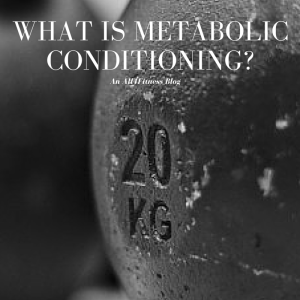What is Metabolic Conditioning?
At All4Fitness we have recently started Metabolic Conditioning Classes or as you all know it, Met-Con.
So, what is “Met-Con”?
Metabolic conditioning simply refers to structured patterns of work and rest periods to elicit a desired response from the body. This desired response is usually to maximize efficiency of a particular energy system. The body has several different methods of getting energy. Different ratios of work to rest periods call upon different energy systems and cause specific adaptations.
To fully be able to apply the concepts of metabolic conditioning, let’s first look at the main ways the body gets energy during exercise.
Metabolism simply refers to how we break down food for energy. Everything we ingest must be broken down into smaller particles in order to be used by the body. There are three primary pathways for metabolism that each has their own place and purpose.
THE IMMEDIATE SYSTEM
Think of this system as the fastest and most powerful method of getting energy. It’s mainly utilized when performing power exercises that last less than 10 seconds (think Olympic lifts and sprinting). With usually four to five minutes recovery time.
THE INTERMEDIATE SYSTEM
This is an intermediate system that provides energy for activities lasting between one to four minutes. It’s primarily used in shorter duration, intense activities including weightlifting and mid-distance running intervals (400-800m). The glycolytic pathway takes between one and three minutes to recover.
THE LONG-DURATION SYSTEM
This long-lasting energy system can go for hours upon hours of easy to moderate intensity work. Since we have almost limitless amounts of fuel for the aerobic system (fat), it can recover in a matter of seconds.
With the three major pathways outlined, keep in mind that there is always interplay. No one sole pathway is working at a time. Throughout a workout, each system is contributing to some degree; however, certain work to rest ratios call upon one primary system.




